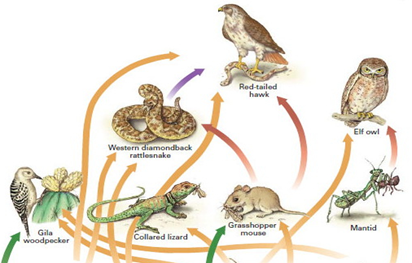

28th August 2023 (7 Topics)
Context
As per the data published on State of India’s Birds (SoIB) report 2023, a large number of bird species in India are either currently declining or projected to decline in the long term.
About the information:
- While raptors, migratory shorebirds, and ducks have declined the most, birds living in habitats like open ecosystems, rivers, and coasts are among the worst affected.
- The key factors responsible for the decline are urbanisation, infrastructural development, environmental pollutants, and climate change.
- Raptors are also in decline globally due to loss of habitat, pesticide accumulation as well as targeted killing.
- The report advised, there is an immediate need for research to diagnose specific threats and measure their impact so that policies can be developed for raptors as a group.
Who are Raptors?
- A raptor is a special type of bird which captures live prey.
- The word “raptor” means “to seize or grasp” in Latin.
- Raptors use their powerful, sharp talons to capture their prey and to defend themselves.
- Several bird species are considered raptors are Eagles, hawks, kites, falcons, and owls.

Why they are significant?
- Raptors are at the top of the food web and are therefore highly vulnerable to changes in the environment such as declines in insects, mammals, small birds, fishes, and increases in contaminants and other environmental conditions.
- Changes in the health of raptor populations can indicate changes in the environment, and by monitoring such shifts we hope to proactively protect the birds as well as other wildlife and the habitats humans share with them.
What are the major threats to birds in India?
- Climate change:
- The average global temperature has risen by over 1 degree Celsius since pre-industrial times, resulting in catastrophic consequences other living beings, like birds.
- It affects bird reproduction and survival through the disruption of species interactions by phenological mismatches.
- Urbanisation:
- Urbanisation results in loss of natural habitat for birds and it expose them to more air pollution and high temperatures.
- Lack of food supplies in urban areas leads to the homogenisation of bird communities as only behaviourally dominant species such as House Crows and feral Rock Pigeons are able to survive.
- Monocultures:
- In India, commercial monoculture plantations of rubber, coffee, and tea have been rapidly expanding in recent years.
- Such plantations are detrimental to the well-being of birds.
- Energy infrastructure:
- Countries have started to generate power using renewable resources instead of depending on conventional methods like coal-fired power plants.
- It has led to an increase of wind turbines in a country like India, where they have been installed in a wide range of landscapes including coastal areas, Western Ghats mountaintops, open arid lands, agricultural lands, and grasslands.
- The major impacts of wind turbines on birds include:
- Direct collision of birds with the rotating wind turbine blades
- Displacement (loss of habitat) of birds from the turbine area due to disturbance
- Barrier effects within habitats (obstacle to migration, or to other regular movements across feeding and roosting areas and breeding colonies)
|
The report mentioned the transmission lines have led to the death of many large-bodies species because of collision and numerous small-bodies species have been electrocuted. |
- Exposure to toxic chemicals during reproductive stages can affect fertility, egg formation, and eggshell thickness. Hence, can lead to impaired incubation and chick-rearing behaviours.
- All of this decreases hatching success and fledgling survival and increases the possibility of reproductive failure.
- Increasing avain diseases: The avian influenza outbreaks in 2020-2021 swept through many Indian States, causing mass mortality of wild birds.
More Articles



